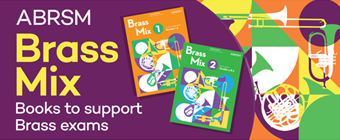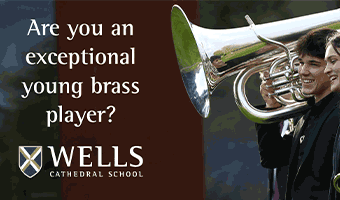

The textured colour palettes revealed by the application of tesserae to form large scale mosaic works are displays of individualised collective creativity.
It is a bonding process producing beauty from the integrity of technique; the figurative to the abstract, organic to geometric.
The processes involved in the A4 Brass Quartet’s own colourings owe as much to their ability to create delineated enticing grid patterns of tonality; the darker hues of the euphonium and baritone thinly separated from the lighter shades of the horn and cornet/flugel. Muted infusions create more complex, tinted pigments.
In that respect this absorbing release is perhaps more akin to the canvases of Mondrian and Rothko than ancient Mesopotamian and Roman floor patterns in inspiration - although the artistic result is equally as impressive.
Premiere recordings
The confident approach to the abaciscus elements - including four premiere recordings from composers Christian Overhead, Daniel Hall, Bramwell Tovey and A4’s own Jonathan Bates, is central to this.
Elsewhere, popular standards such as Kosma’s ‘Autumn Leaves’ and Grainger’s ‘Molly on the Shore’ sit comfortably alongside the repressed tenderness of Elgar’s ‘Salut d’Amour’ and humility of Bruckner’s dedicative ‘Locus iste’ to offer cameos of stylistic insight.
Chilling immediacy
And whilst it is impossible to finesse the picaresque wit of ‘Candide’ with such limited tonal sources, the darker hued murderous intent behind the notorious ‘Black Dahlia’ killing is evoked with chilling immediacy.
Daniel Hall’s score reads like a Raymond Chandler novella in capturing the poisonous film-noir glamour of late 1940’s Hollywood.
the darker hued murderous intent behind the notorious ‘Black Dahlia’ killing is evoked with chilling immediacy. Daniel Hall’s score reads like a Raymond Chandler novella in capturing the poisonous film-noir glamour of late 1940’s Hollywood.
Beware though into reading too much into the fact that this is the ensemble’s second outing into the world of murder mysteries after the unresolved ‘Bates Motel’ case on their last release. They are very nice lads.
Thoughtful ease
Jonathan Bates’ own ‘Toccata’, with its tasteful hint of Wilbyesque patten structures is a tessellated gem, whilst Kentaro Sato’s reflective ‘Tsuna’nagari’ translates to the medium with thoughtful ease.
The trio of ‘suites’ also showcase the ensemble’s mature, encompassing musical outlook: Serebier’s ‘Cuarteto’ is stylishly realised, its integrity maintained in a completely new form. It’s a pity though that we don’t get to hear the five (now six) ‘miniature’ family portraits from the polished pen of Christian Overhead. His nephews and nieces must be a handful of delight.
Bela Bartok’s ‘Six Romanian Folk Dances’ are captured with an evocative richness of character, whilst the emotion underpinning Bramwell Tovey’s touching ‘Street Songs’ portraiture seeps through the mind’s eye with sepia tinted imagery of time passed, people and comrades lost.
Iwan Fox
To purchase: https://www.a4brassquartet.co.uk/shop/albums
Play list:
1. Cuarteto (José Serebrier arr. J. Bates)
i. Meditacion
ii. Danza
iii. Cancion
iv. Ronda
2. Overture to Candide (Leonard Bernstein arr. D. Thomas)
3. Toccata 2* (Jonathan Bates)
4. Locus iste (Anton Bruckner arr. C Robertson)
5. Six Romanian Folk Dances (Béla Bartók arr. C Robertson)
i. Jocul cu bâtă (Stick Dance)
ii. Brâul (Sash Dance)
iii. Pe loc (Stamping Dance)
iv. Buciumeana (Horn Dance)
v. Poarga Românească (Romanian Polka)
vi. Măruntel (Fast Dance)
6. Autumn Leaves (Joseph Kosma arr. J Bates)
7. 5 Miniatures (Christian Overhead)
i. LR - A chirpy lark
ii. IM - A rhythmic interlude
iii. EJ - A boisterous fugue
8. Molly on the Shore (Percy Grainger arr. J Bates)
9. The Black Dahlia (Daniel Hall)
10. Tsuna’ngari (Kentaro Sato arr. J Bates)
11. Street Songs (Bramwell Tovey)
i. ♩=56 - In strict laid back time…
ii. ♩=112 - Brazen
iii. ♩=69 - Adagio, ‘The Silent Voices…’
iv. ♩=168 - Very Fast Indeed
12. Salut d’Amour (Edward Elgar arr. J Bates)









